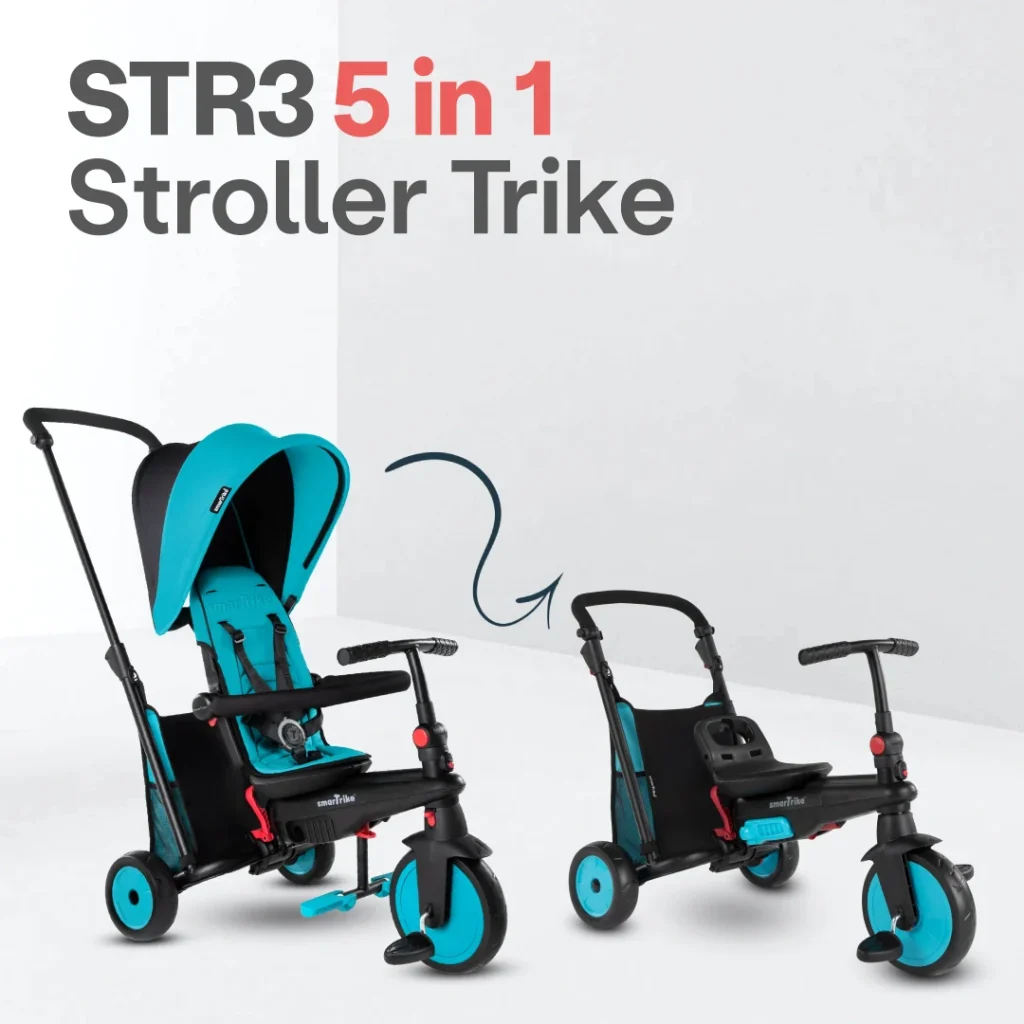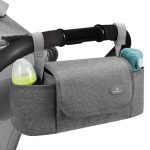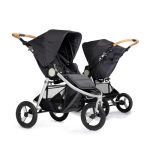Are you wondering when the right time is to say goodbye to the stroller? As your little one grows, this question often lingers in the minds of many parents.
Deciding when to stop using a stroller can feel like a significant milestone in your child’s development. It’s not just about convenience; it’s about their independence and readiness to explore the world on their own two feet. You might find yourself asking: Is it too soon?
Or perhaps too late? This decision can impact your daily routine, your child’s safety, and even their physical development. By understanding the signs and cues, you can confidently decide when it’s time to let go of the stroller. So, if you’re eager to make the right choice for you and your child, keep reading. We’ll explore the telltale signs, expert advice, and practical tips to guide you through this important transition.

Credit: www.parentingtogo.ca
Signs Your Child Is Ready To Stop Using A Stroller
Deciding when to stop using a stroller can be challenging for parents. Watching your child grow and become more independent is exciting. Recognizing the signs that they are ready to walk on their own is crucial. Here, we explore the physical and behavioral signs that indicate your child is ready to ditch the stroller.
Physical Development Indicators
Children develop at different rates, but certain physical milestones suggest stroller independence. Your child can walk steadily without tripping often. They might prefer walking to sitting in the stroller. This increased stamina shows readiness to walk more. A child able to climb stairs without help is showing strength and coordination. These physical signs indicate they can handle walking longer distances.
Behavioral Signs
Behavioral changes also hint at stroller readiness. Your child may resist sitting in the stroller, showing a desire for freedom. They might insist on walking beside you, holding your hand. This shows a need to explore their surroundings. Increased curiosity and confidence in walking are key signs. If they are more engaged in walking activities, they are likely ready. These behavioral cues help parents decide when strollers are no longer needed.

Credit: globalnews.ca
Age Guidelines For Stroller Use
Strollers are essential for parents with young children. Knowing when to stop using them can be challenging. Age guidelines help parents make informed decisions. Transitioning from stroller to independent walking marks a big step. Each stage of a child’s growth has its own recommendations.
Infant To Toddler Transition
Infants rely heavily on strollers for comfort and safety. As babies grow, they begin to explore their surroundings. Around 12 months, toddlers start to walk independently. This is a great time to reduce stroller use. Encourage short walks to build strength and confidence. Keep the stroller nearby for longer outings.
Preschool Age Recommendations
Preschoolers often enjoy walking more than riding. Between ages three and five, children develop motor skills rapidly. They are capable of walking longer distances. Strollers become less necessary. Use them for crowded places or long trips. Allow children to walk and explore at their own pace. This fosters independence and physical development.
Benefits Of Moving Beyond The Stroller
Letting kids walk instead of using a stroller boosts their independence and strengthens their muscles. It also enhances coordination and gives them a sense of freedom. As they grow, this shift supports their physical development and encourages exploration of their surroundings.
Transitioning from a stroller can be a pivotal moment in your child’s development. It opens up a world of opportunities for growth, independence, and physical activity. While strollers offer convenience, moving beyond them can bring numerous benefits that might surprise you.Encouraging Independence
Letting go of the stroller encourages your child to explore their surroundings. They learn to navigate the world on their own two feet, boosting confidence. As they start making choices about where to walk, you’ll notice their decision-making skills sharpen. Children often surprise us with their ability to handle new challenges. By ditching the stroller, you give them the chance to prove their capabilities. This newfound independence can be empowering for both you and your child.Promoting Physical Activity
Walking instead of riding promotes physical fitness. It’s an easy way for kids to get exercise naturally throughout the day. Plus, it helps them burn off energy, which can lead to better sleep at night. Consider the benefits of a daily walk to the park instead of a ride. It’s a simple change that can have a big impact on your child’s health. Plus, it’s a great way for you to get some exercise too! Think about your family outings. Could they become more active by simply leaving the stroller behind? The next time you head to the zoo or a local festival, try letting your child walk part of the way. You might be surprised at how well they handle it—and how much more engaged they are with their surroundings. Making the switch from a stroller doesn’t have to happen overnight. Start small, and gradually increase the walking distance. Your child’s stamina will grow, and so will their enthusiasm for exploring the world on foot.Challenges Of Transitioning Away From The Stroller
Transitioning away from the stroller is a significant milestone for parents and children. It signals a move towards independence. Yet, this change can present challenges. Children may resist walking long distances. Safety concerns also arise as they navigate crowded places. Understanding these challenges helps parents prepare. It ensures a smoother transition for both.
Handling Long Walks
Long walks can be tiring for young children. Strollers provide a convenient way to rest. Without them, children may complain of fatigue. Parents must plan walks strategically. Shorter distances can ease this transition. Frequent breaks allow children to recharge. Fun activities along the way keep them engaged. These strategies make long walks enjoyable.
Managing Safety Concerns
Safety becomes a priority without a stroller. Children are more exposed in busy areas. Parents must stay vigilant. Holding hands helps prevent accidents. Teaching kids road safety is essential. It prepares them for walking independently. Recognizing potential dangers is vital. Choosing quieter paths minimizes risks. Safety awareness ensures a safer transition.
Alternatives To Stroller Use
Parents often wonder about the right time to stop using a stroller. As children grow, they become more active and curious. Encouraging walking helps develop independence and physical strength. Consider alternatives like baby carriers or backpacks for short distances and outings.
As your child grows, there comes a time to consider alternatives to stroller use. Strollers are convenient, but they can limit your child’s physical activity and independence. Exploring other options not only promotes their development but also adds fun to your outings. Let’s dive into some practical alternatives that can effectively replace the stroller in your everyday life.Using Child Carriers
Child carriers are a great way to maintain closeness while on the move. They allow you to carry your child comfortably on your back or front, freeing up your hands. This alternative is especially useful for hikes or crowded spaces where maneuvering a stroller would be a challenge. My friend once shared how using a carrier on a mountain trail made her toddler giggle with excitement. It’s a hands-free solution that keeps your child secure while letting you explore new terrains. You also get to engage in conversations with your child, helping to build a strong bond.Opting For Scooters And Bikes
Scooters and bikes are excellent for encouraging independence and physical activity. They enable your child to develop coordination and balance while having fun. For shorter distances, a scooter can be a quick and enjoyable way to get around. Consider investing in a balance bike for your toddler. Balance bikes are pedal-less bicycles that teach kids how to steer and balance. They prepare your child for riding a regular bike without training wheels, giving them confidence and a sense of achievement. Have you ever noticed how much kids love the thrill of a bike ride? The wind in their hair and the speed under their control can be exhilarating. It’s a great way to help them burn off energy while you walk or jog alongside. When thinking about alternatives, ask yourself: What would make your outings more enjoyable and beneficial for both you and your child? Embracing these alternatives to strollers can lead to more active, adventurous, and connected experiences.
Credit: bombigear.com
Tips For A Smooth Transition
Transitioning from a stroller can be challenging. Parents often wonder how to ease this change for their child. Here are some practical tips to help make the process smoother. These strategies focus on gradual changes and incorporating fun activities.
Gradual Changes
Start by reducing stroller use slowly. Encourage short walks without it. Let your child walk part of the journey. Celebrate their progress to boost confidence. Use positive reinforcement. Praise them for every step taken independently. This builds excitement for walking more.
Gradually increase walking distances. Begin with short strolls around the neighborhood. Extend to parks and nearby places. Introduce walking as a fun adventure. Make it part of daily routines. Familiar paths make the transition easier.
Incorporating Fun Activities
Turn walking into playtime. Create games like “Follow the Leader.” Let them lead the way. Sing songs together. Play “I Spy” with colors or objects. Make walks a learning experience. Children enjoy exploring new environments.
Visit interesting places. Parks with playgrounds are ideal. Allow time for play during walks. Encourage social interaction. Meet friends and their children for walks. This builds excitement. Children look forward to these walks.
Reward their efforts. Use small treats or stickers. Celebrate milestones. This motivates them to walk more. They feel proud of their achievements.
Common Mistakes To Avoid
Parents often delay transitioning from a stroller, missing signs of their child’s growing independence. Ignoring weight limits and safety guidelines can lead to accidents. Over-relying on strollers may hinder a child’s physical development and exploration. Recognize when your child is ready to walk more independently.
Transitioning your child out of a stroller is a significant milestone, and getting it right is crucial. Many parents make common mistakes that can complicate this process. Avoiding these pitfalls ensures a smoother transition and supports your child’s development.Ignoring Child’s Readiness
Parents often overlook their child’s readiness to move on from the stroller. It’s important to observe your child’s behavior and physical abilities. Are they eager to walk and explore, or do they still rely heavily on the stroller for comfort? Ignoring these signs can lead to frustration for both you and your child. If they’re not ready, they might resist or become anxious. This can make outings stressful rather than enjoyable. Look for signs of readiness like your child showing interest in walking longer distances. Notice if they seem bored or restless when confined in the stroller. This could mean they’re ready for more independence.Rushing The Transition
Another mistake is rushing the transition before your child is truly ready. Have you ever felt pressured by other parents or societal norms to move on from the stroller sooner than necessary? This can be a common trap. Children develop at their own pace. Pushing them too quickly can lead to unnecessary stress and tantrums. Instead, transition gradually by allowing short periods of walking and gradually increasing the duration. Consider the impact on daily routines like trips to the park or grocery shopping. You want these outings to be pleasant experiences, not battles of wills. Take your time and let your child adjust at their own pace. Have you noticed any of these mistakes in your parenting journey? Reflect on your child’s needs and readiness. You can make this transition smoother by avoiding these common pitfalls.Frequently Asked Questions
Does A 3 Year Old Need A Stroller At Disney?
Yes, a stroller is recommended for a 3-year-old at Disney. It provides comfort and saves energy. Strollers also offer a place for naps and help carry belongings.
Do I Still Need A Stroller For A 3 Year Old?
Yes, a stroller can be useful for a 3-year-old. It provides convenience during long outings, travel, or when the child is tired. Consider your child’s activity level and comfort. Many parents find strollers helpful for carrying essentials and ensuring their child’s safety in crowded places.
What Is The 2 Hour Rule For A Stroller?
The 2-hour rule suggests not keeping a baby in a stroller for more than two hours continuously. This helps prevent discomfort and promotes healthy development. Regular breaks allow the baby to stretch and move, reducing the risk of restricted movement and enhancing overall well-being.
Can A 7 Year Old Be In A Stroller?
Yes, a 7-year-old can use a stroller if needed. Consider factors like child’s comfort, size, and mobility. Strollers are helpful for long outings or when the child is tired. Choose a sturdy stroller designed for older children to ensure safety and comfort.
Conclusion
Deciding when to stop using a stroller is important. Every child grows differently. Pay attention to their comfort and independence. Watch for signs they want to walk more. Trust your instincts and your child’s cues. Encourage walking for short distances.
It builds strength and confidence. Remember, safety is always a priority. Ensure your child is ready and happy. A gradual transition helps everyone adjust smoothly. Enjoy this exciting milestone in your child’s journey. These moments are precious. Cherish them as they come.
Your child will thrive with your guidance and support.


